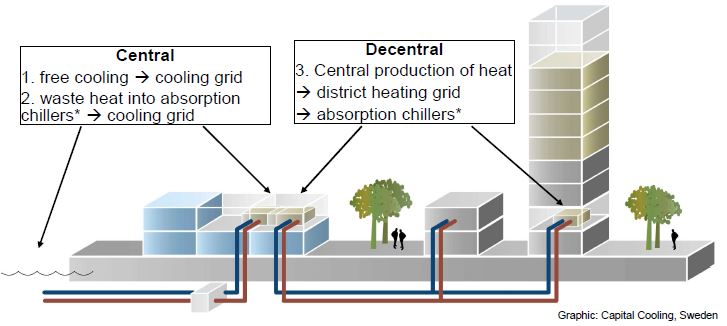SUMMERHEAT analysed how to meet cooling needs in the summer, by applying heat from combined heat and power, in a number of European countries.

Duration:
November 2006 to December 2008.
Target Countries:
Germany, Austria, Czech Republic, Denmark, France, Poland.
Description / Objectives:
The SUMMERHEAT project analysed how to meet cooling needs in the summer by applying heat from combined heat and power (CHP). The current low demand for heat in the summer is a main driver against the increased use of CHP as it strongly influences the economics of a power plant. An increase in CHP plants is desirable due to their high primary energy efficiency.
The SUMMERHEAT project had the following objectives:
- Provide an overview of the current market situation for summer heat in Europe.
- Specify the framework conditions in the partner countries, including the barriers.
- Present policy recommendations for removing barriers through targeted actions.
- Build regional cooperation networks between the key actors and stakeholders.
- Develop a roll-out strategy for an increase use and development of summer heat.
Results / Final Reports:
The direct outcomes of the SUMMERHEAT project for the participating countries included:
- Legislative and political framework descriptions (country reports).
- Market reports regarding the use of summer heat (utilisation and potential).
- Ecological and economic comparison of summer heat and conventional cooling.
- Feasibility study of summer heat for each of the participating countries.
The results of the SUMMERHEAT project included the following key points:
- Cooling efficiency depends on the machine’s coefficient of performance (CoP).
- Cost efficiency of thermal cooling depends on the number of full load hours.
- Ecological comparison – thermal cooling has significant advantages.
- Economic comparison – thermal cooling depends on investments costs.
- Market analysis – absorption cooling has a competitive advantage over compression.
The detailed results of SUMMERHEAT can be found in the main report, alongside the summary report and summary presentation.
Policy Recommendations:
The SUMMERHEAT project suggested the following policy recommendations:
- Specific legislative support for thermal cooling is not common in the EU. Indirect measures through the support of CHP installations are more common. Supporting CHP should, however, automatically consider a levelling-out of heat demand throughout the year.
- Policy instruments at European and at national level, for evaluating efficiency of end-user solutions should be based on primary resource factors.
- A level playing field should be creating, at EU and national level, for district cooling solutions and local authorities should remove administrative barriers (i.e. provide licenses, permissions).
- Local authorities should cooperate with industry to engage in proactive energy planning.
Project Partners:
Berliner Energieagentur GmbH (DE); Austrian Energy Agency (AT); CITYPLAN (CZ); Energy Consulting Network (DK); Københavns Energi (DK); Wien Energie Fernwärme (AT); Rhônalpénergie-Environnement (FR); Euroheat & Power (BE); National Energy Conservation Agency (PL).
Websites:
https://ec.europa.eu/energy/intelligent/projects/en/projects/summerheat
Funding:
IEE Programme.